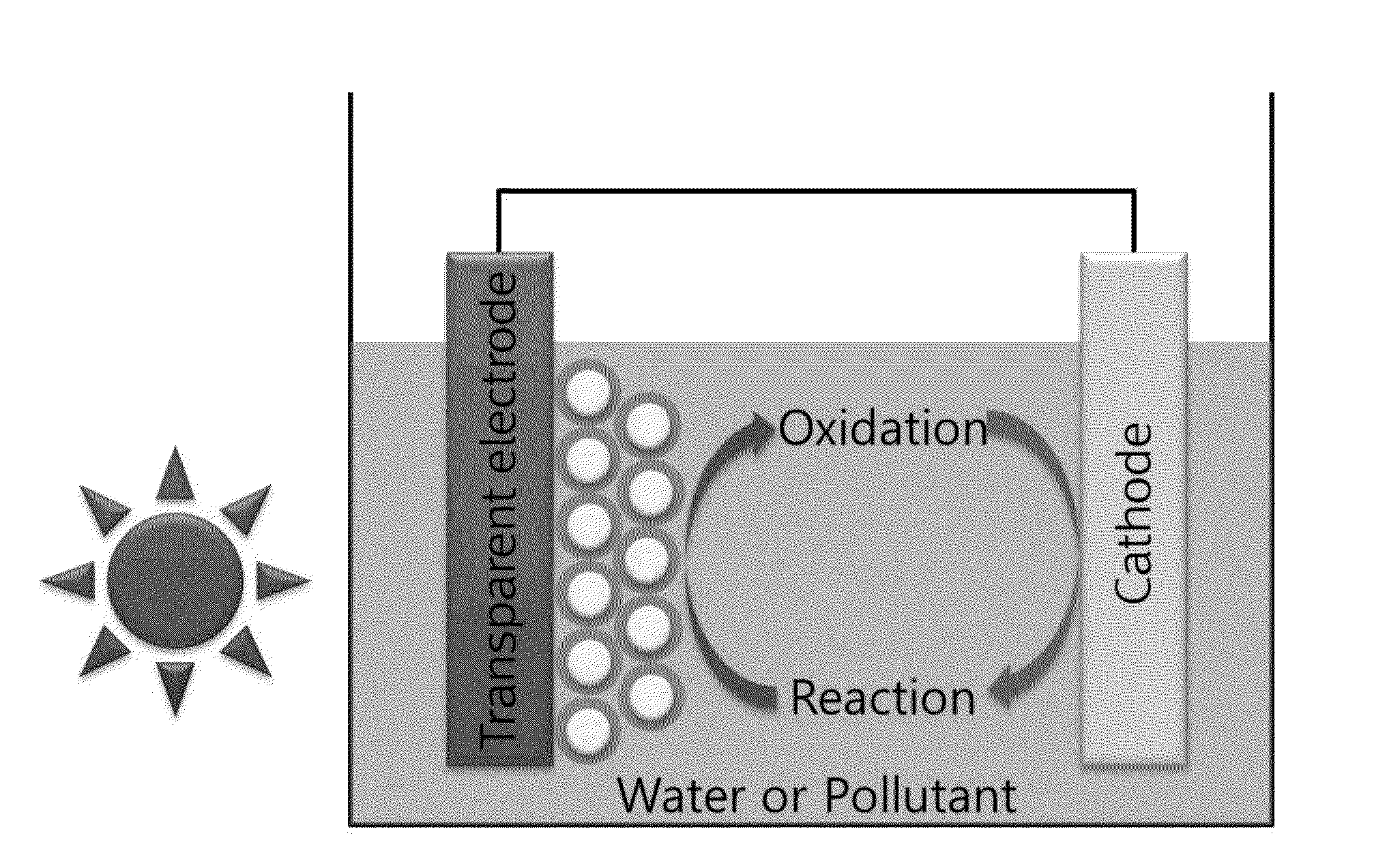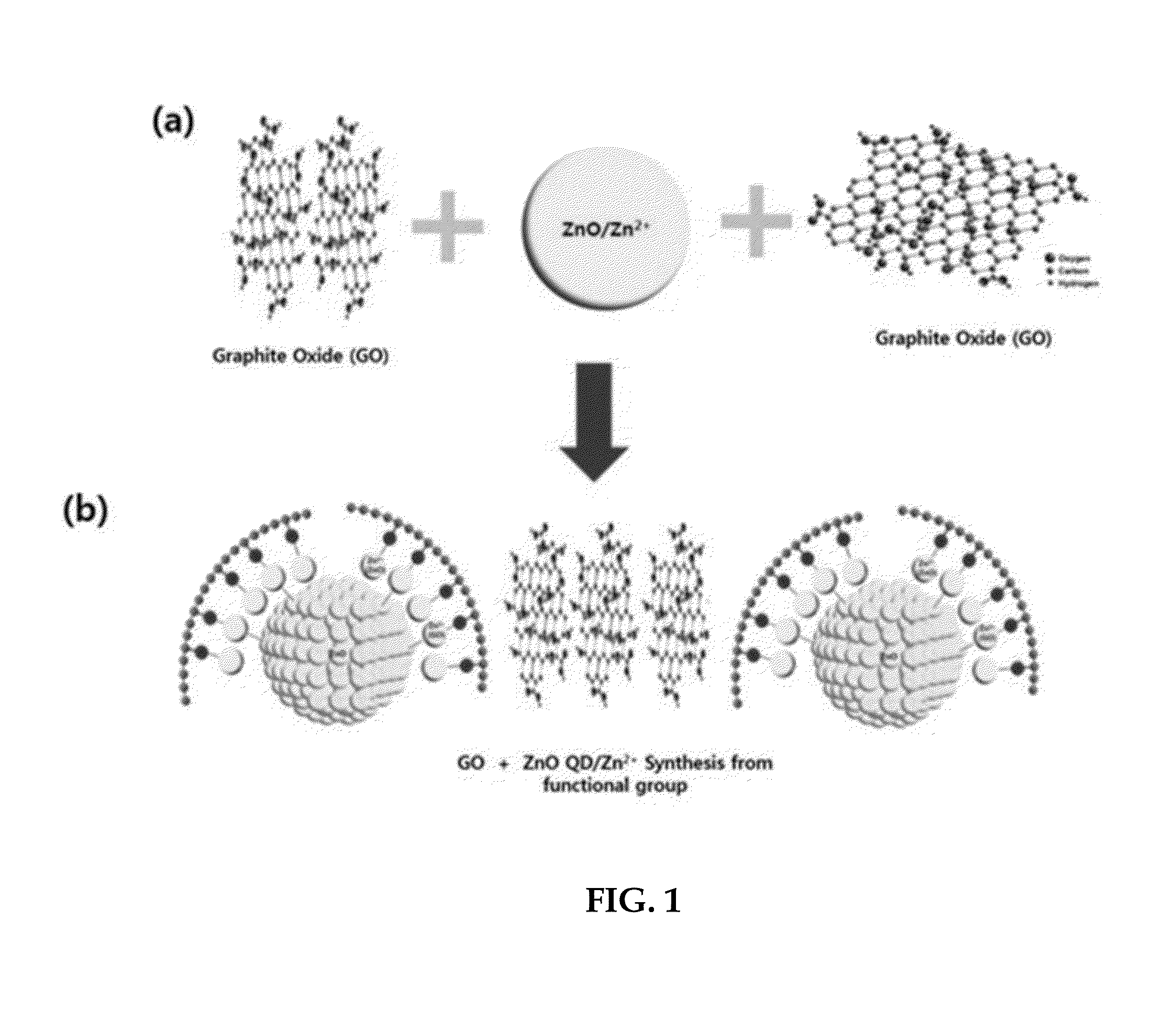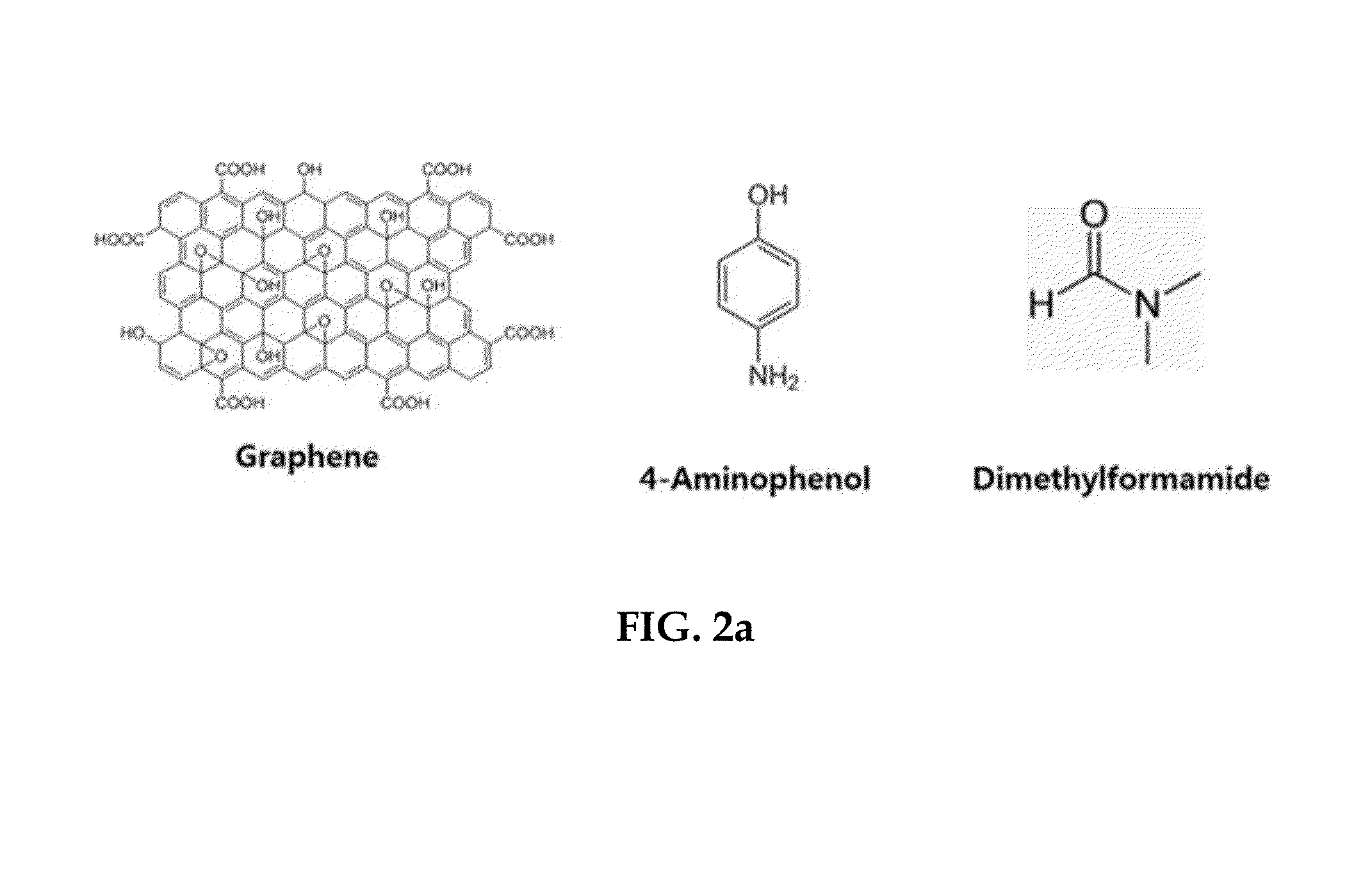Photocatalyst using semiconductor-carbon nanomaterial core-shell composite quantum dot and method for preparing the same
a technology of semiconductor carbon nanomaterials and composite quantum dots, which is applied in the direction of organic compounds/hydrides/coordination complexes, physical/chemical process catalysts, metal/metal-oxides/metal-hydroxide catalysts, etc., can solve the problems of low solar energy conversion efficiency, inability to absorb light in the visible region, and superior photocatalytic activity, etc., to facilitate the solution process or other device-manufacturing process, the effect of super
- Summary
- Abstract
- Description
- Claims
- Application Information
AI Technical Summary
Benefits of technology
Problems solved by technology
Method used
Image
Examples
preparation example 1
Preparation of Zinc Oxide Quantum Dot
[0080]0.93 g of zinc acetate dihydrate [Zn(COO)2.2H2O] was added to 200 mL of N,N-dimethylformamide. After stirring for 10 minutes, a dispersion of graphite oxide and the zinc acetate dihydrate solution were mixed and stirred for 5 hours at 150 rpm while maintaining temperature at 95° C. The solution became transparent 30 minutes later and then became a turbid white solution 1 hour later. 5 hours later, a white powder was produced in a transparent solution. The powder was washed with ethanol and then with distilled water and dried slowly in an oven at 55° C. to obtain a zinc oxide quantum dot as a powder.
preparation example 2
Preparation of Zinc Oxide-Graphene Quantum Dot
[0081]40 mg of graphite oxide was dispersed in 40 mL of N,N-dimethylformamide for 10 minutes. And, 0.93 g of zinc acetate dihydrate [Zn(COO)2.2H2O] was added to 200 mL of N,N-dimethylformamide and stirred. After stirring for 10 minutes, the dispersion of graphite oxide (GO) and the zinc acetate dihydrate solution were mixed and stirred for 5 hours at 150 rpm while maintaining temperature at 95° C. The resulting solution was initially black but became transparent 30 minutes later and then became a turbid white solution 1 hour later. 5 hours later, a white powder was produced in a transparent solution. The powder was washed with ethanol and then with distilled water and dried slowly in an oven at 55° C. to obtain a zinc oxide-graphene quantum dot as a powder.
[0082]FIG. 1 schematically shows a procedure whereby a zinc oxide-graphene core-shell quantum dot is prepared using graphite oxide (GO) and zinc oxide and the resulting quantum dot.
[00...
example 1
Preparation of Microparticle in which Zinc Oxide-Graphene Core-Shell Quantum Dot is Self-Assembled and Photocatalyst
[0085]Graphene oxide was prepared to prepare a zinc oxide-graphene core-shell quantum dot. 5 g of graphite powder was mixed with H2SO4 (86 mL) / H2O (90 mL)+HNO3 (21 mL) / H2O (30 mL) and sonicated for about 1 hour. 5 days later, after centrifuging using DI water, moisture was removed by placing in an oven (80° C.) for 3-4 days. The prepared graphite oxide (GO) (400 mg) was added to dimethylformamide (400 mL) and sonicated for about 10 minutes. After adding zinc acetate dihydrate (18.4 g) to dimethylformamide (2 L), the zinc acetate dihydrate solution was added to the dispersion of GO in dimethylformamide and reaction was conducted for 5 hours under the condition of 140° C. and 270 rpm. 2 hours after the reaction was started, 4-aminophenol (914 mg) was added and then reaction was continued for the remaining 3 hours. After the reaction was completed, the product was washed ...
PUM
| Property | Measurement | Unit |
|---|---|---|
| Light | aaaaa | aaaaa |
| Semiconductor properties | aaaaa | aaaaa |
Abstract
Description
Claims
Application Information
 Login to View More
Login to View More - R&D
- Intellectual Property
- Life Sciences
- Materials
- Tech Scout
- Unparalleled Data Quality
- Higher Quality Content
- 60% Fewer Hallucinations
Browse by: Latest US Patents, China's latest patents, Technical Efficacy Thesaurus, Application Domain, Technology Topic, Popular Technical Reports.
© 2025 PatSnap. All rights reserved.Legal|Privacy policy|Modern Slavery Act Transparency Statement|Sitemap|About US| Contact US: help@patsnap.com



